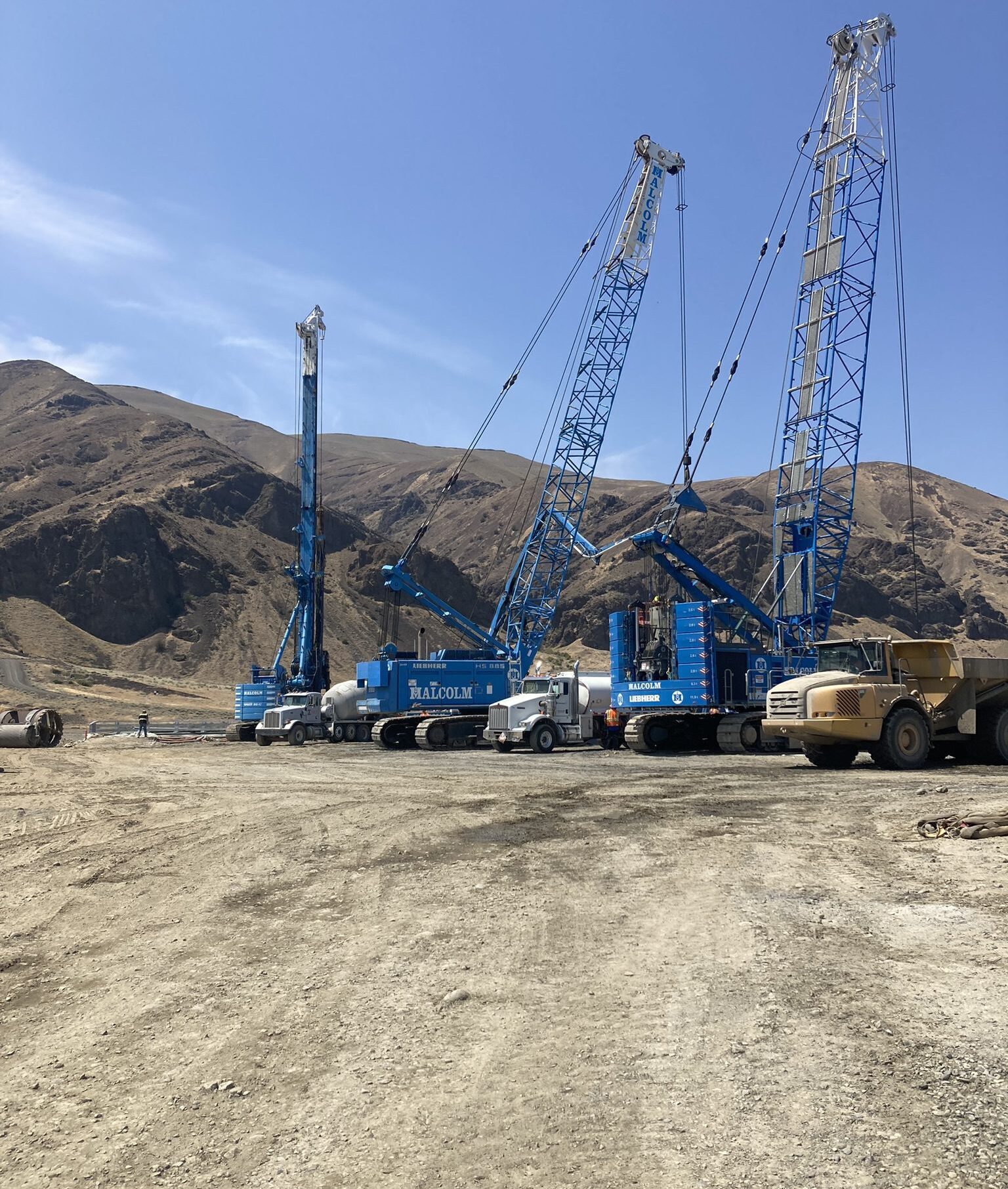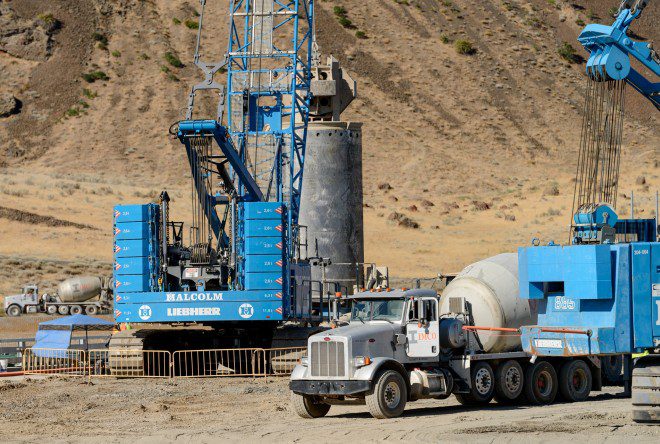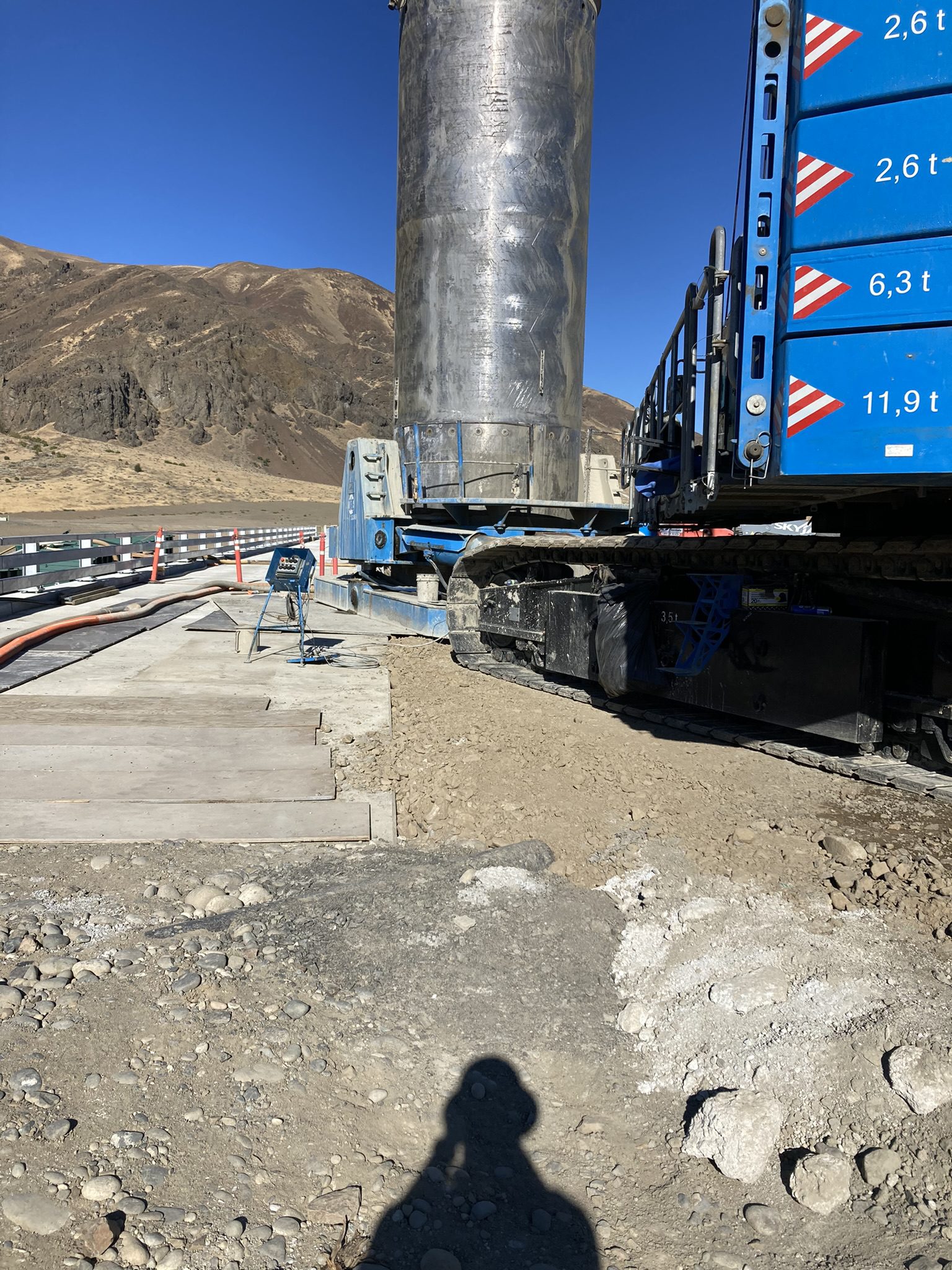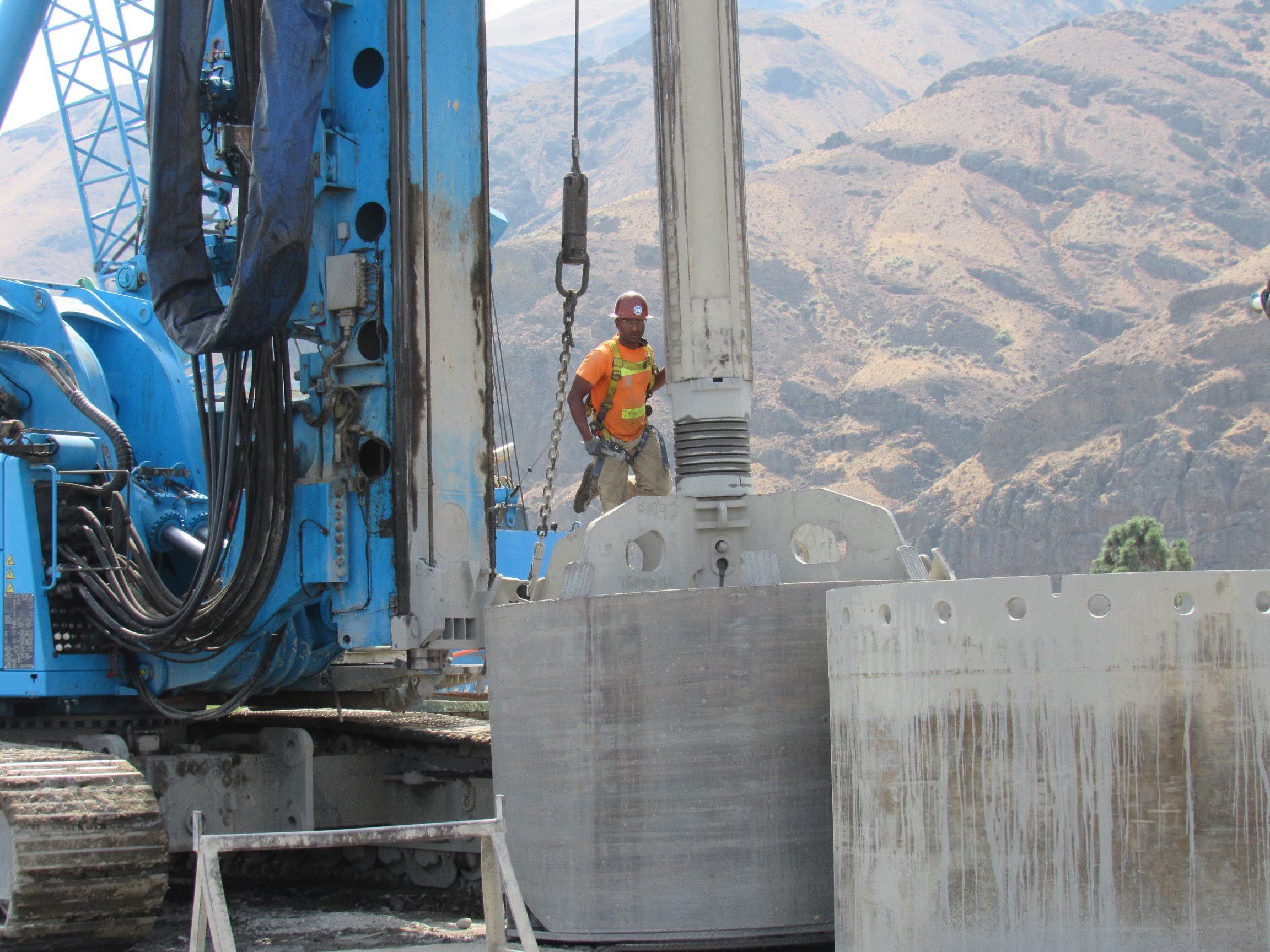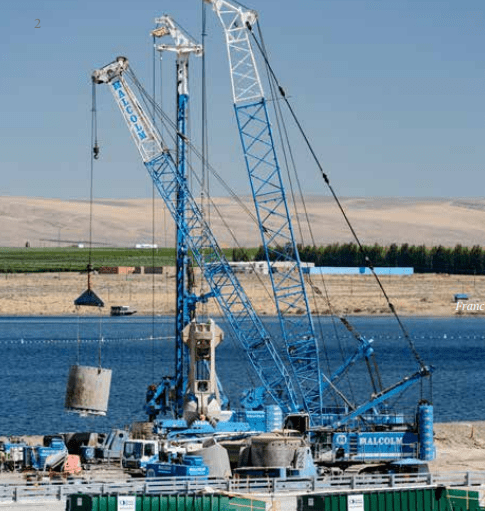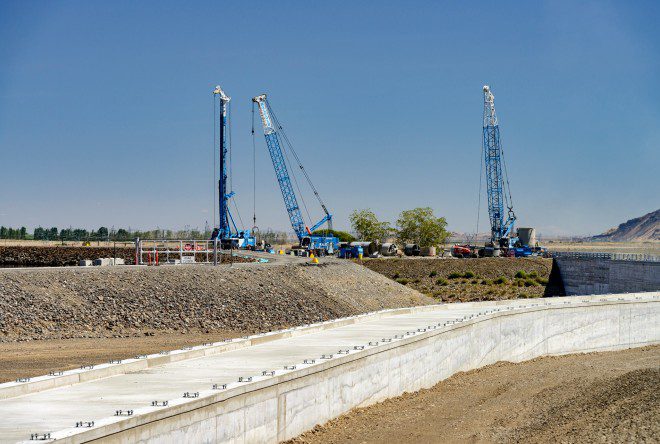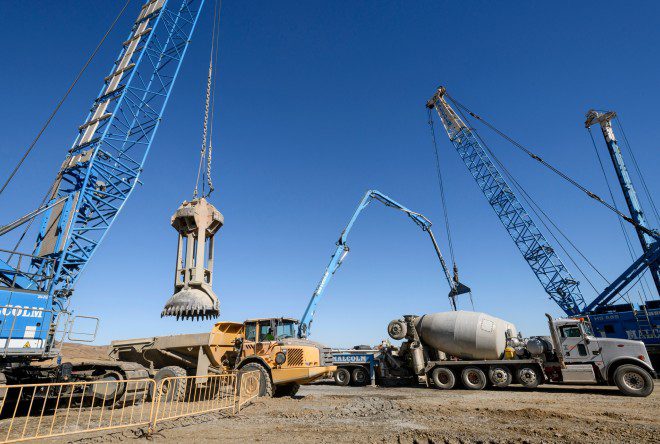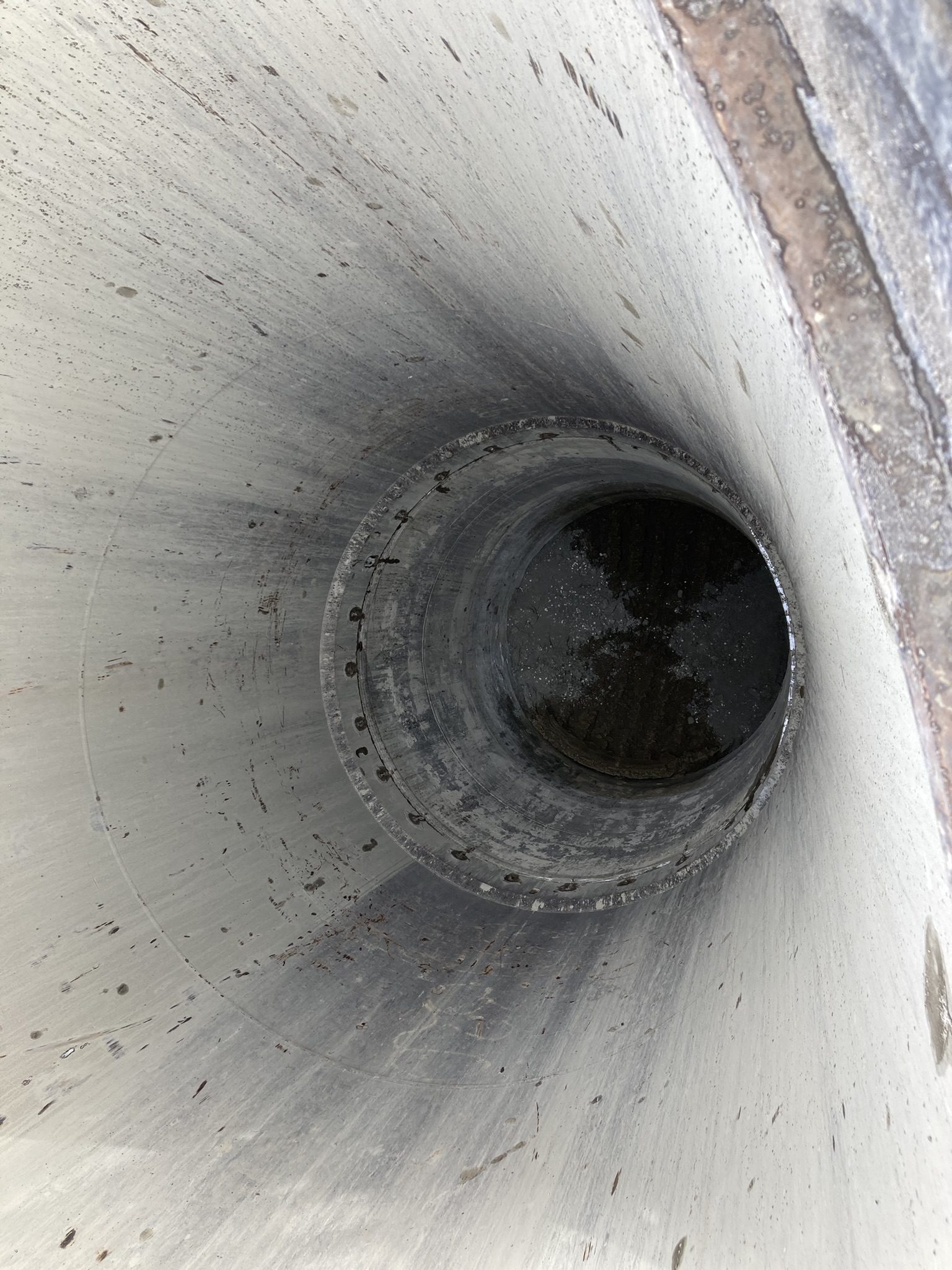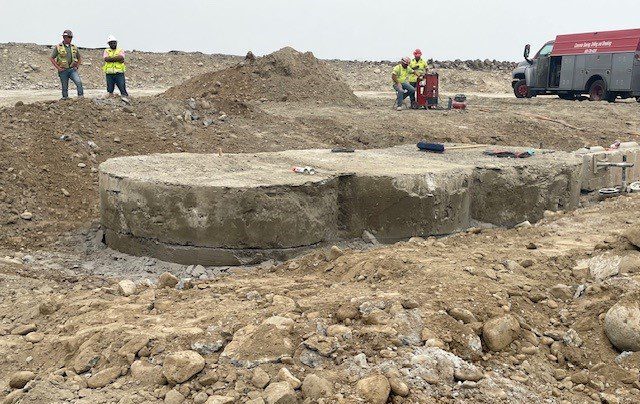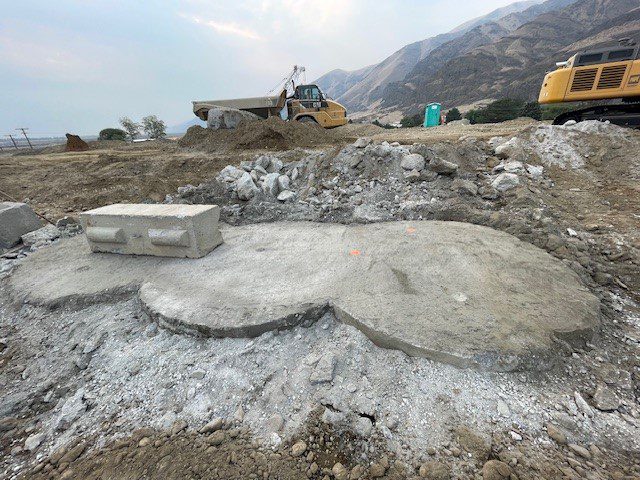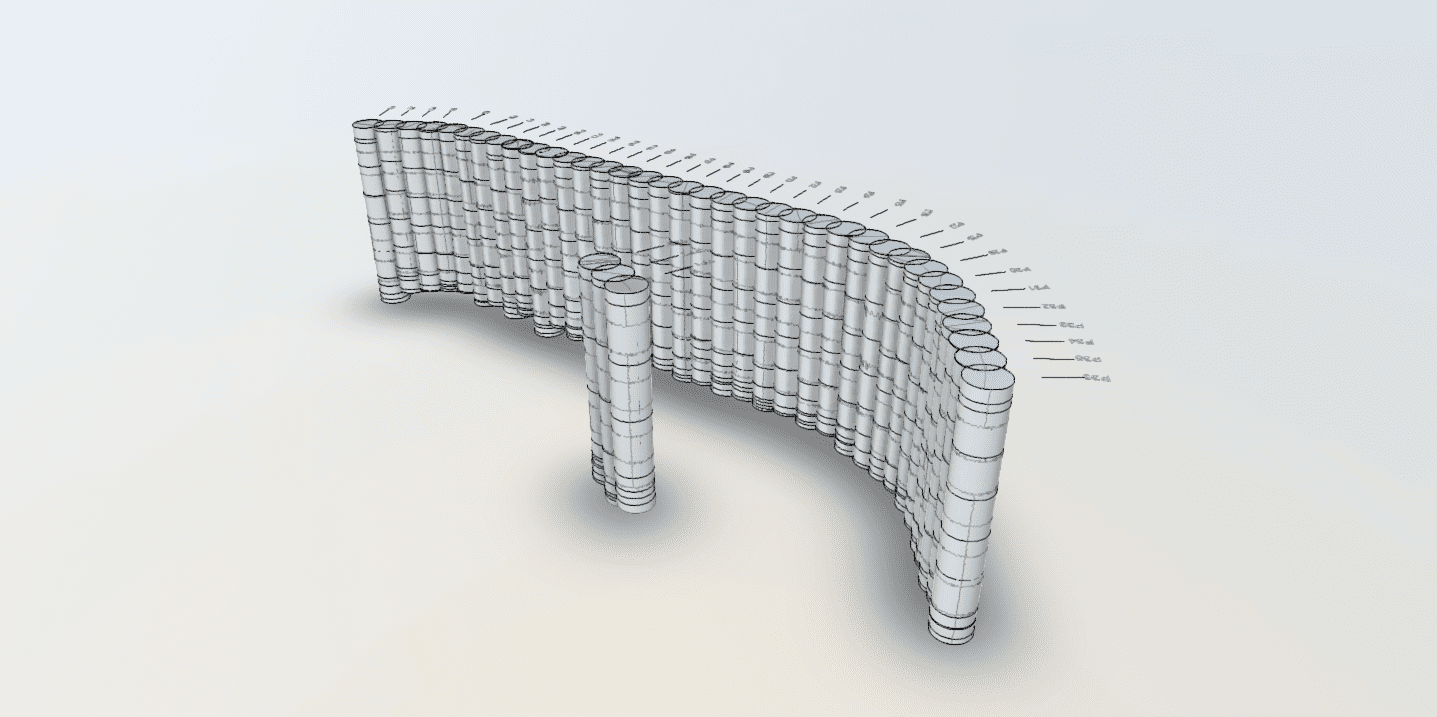Dam Embankment Improvement: Enhancing Seismic Resilience
The Priest Rapids Dam Embankment Improvement Project involved the replacement of the existing right earthen dam embankment with a Roller Compacted Concrete (RCC) structure to improve seepage cut-off and seismic resilience. A secant pile cut-off wall was required to connect the core of the existing earth embankment with the new RCC structure built downstream, while the earthen embankment remained in service with a full reservoir pool in place during construction.
The project design engineer chose a 270-foot-long secant pile cut-off wall as the solution, specifying that the wall must maintain a continuous minimum 5-foot thickness and have a minimum of 5 feet embedment into the intact underlying basalt formation with unconfined compressive strengths in excess of 30,000 psi. Full-depth temporary casing was required during pile construction to protect the dam’s integrity, as well as as-built 3D modeling and down-hole camera inspection to monitor installation quality and tolerances.
Plastic concrete, composed of cement, hydrated bentonite slurry, fine, and coarse aggregates, was batched on site and provided a low-strength and impermeable matrix with properties similar to the existing embankment core.
The selection of pile sizing and spacing was left to the drilling subcontractor by the engineer. Malcolm chose to utilize the oscillator method with 3-meter casing, placing 10-foot in diameter piles on center-to-center spacings of 7.5 feet to minimize the total amount of piles and joints, while providing the maximum tolerance within the strict verticality specification. Installing drilled shafts in an active dam embankment required continuous monitoring of excavated materials and water levels to ensure dam stability.
Sonic Caliper equipment was used to verify the verticality of each built pile, with results modeled in REVIT 3-D to monitor overlap and wall thickness in real-time. The Shaft Inspection Device (MiniSID) down-hole inspection camera was utilized to monitor shaft base cleanliness and inspect in-situ rock condition.
